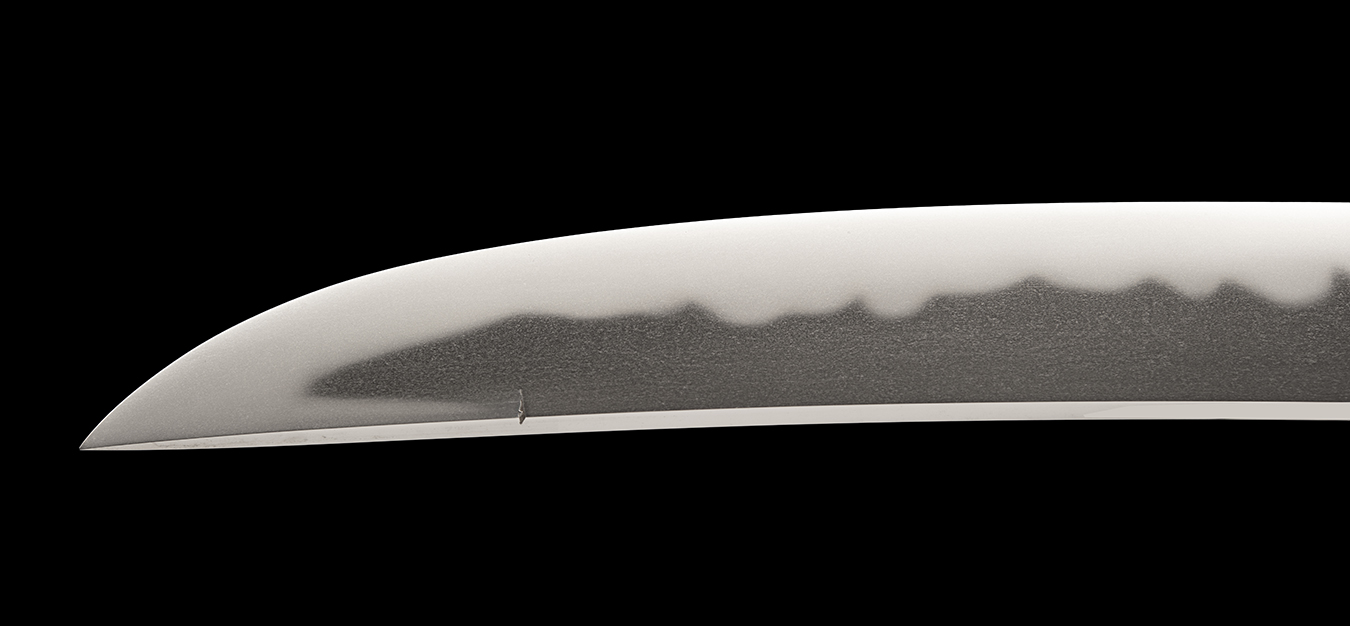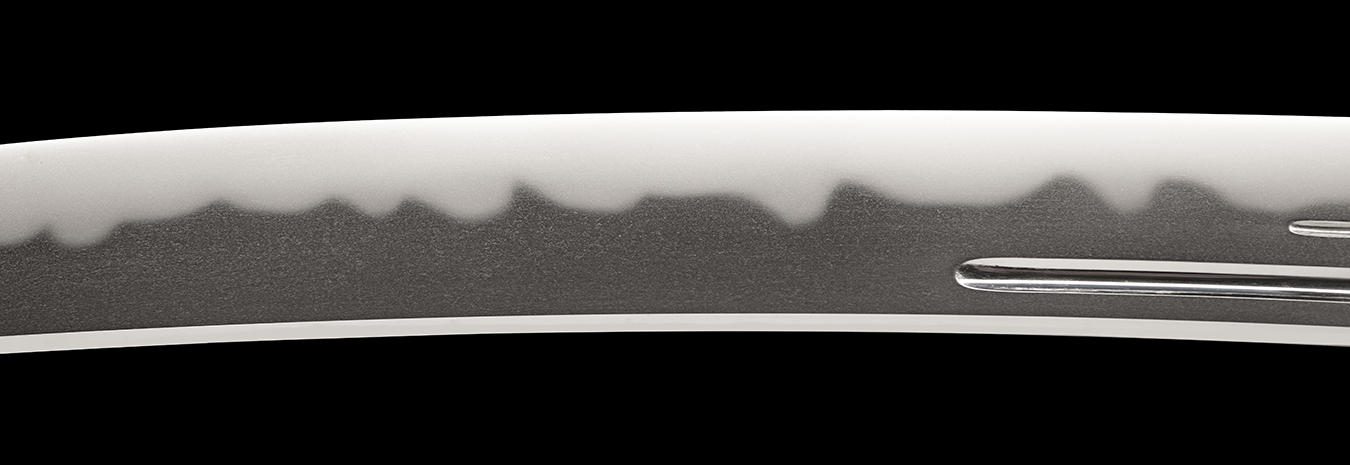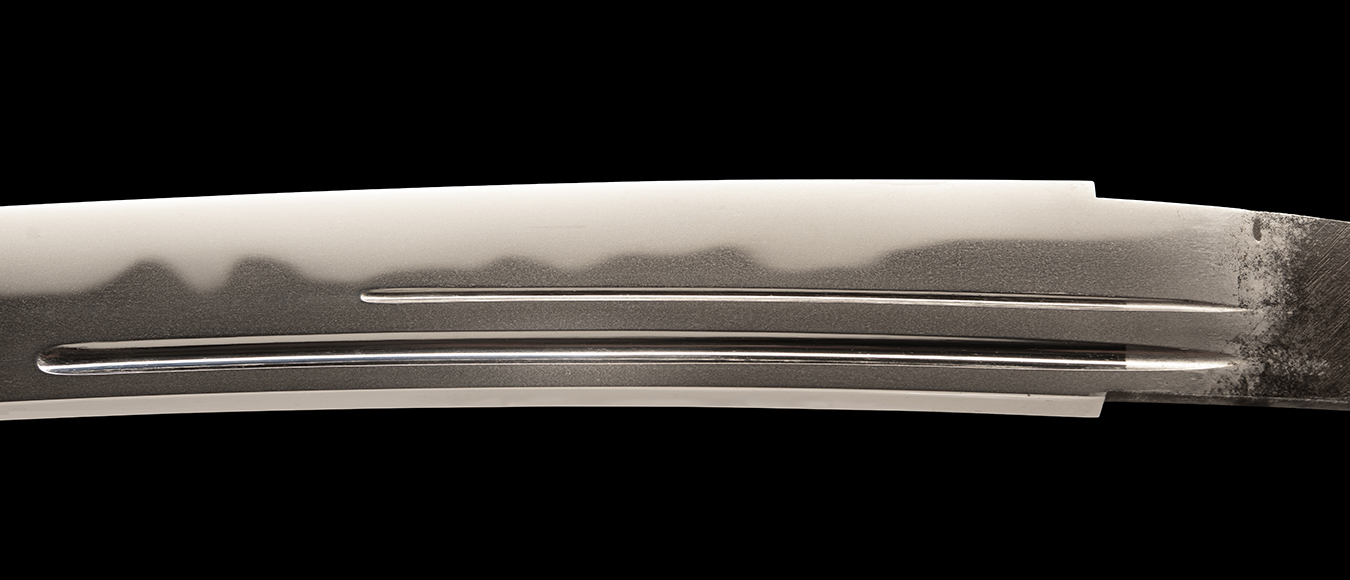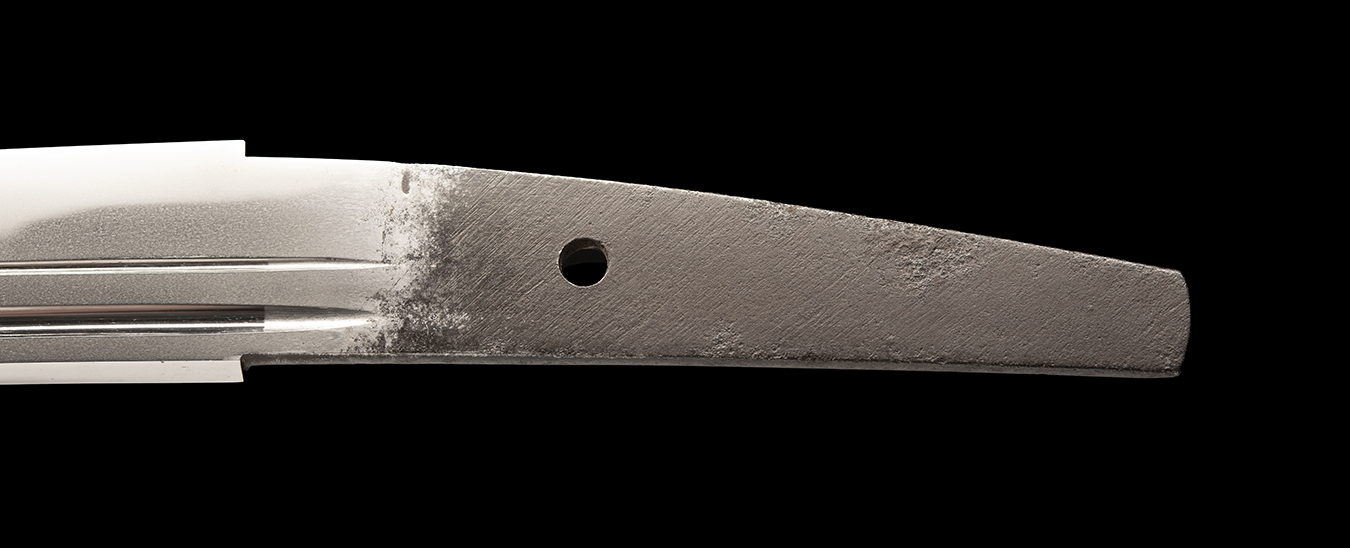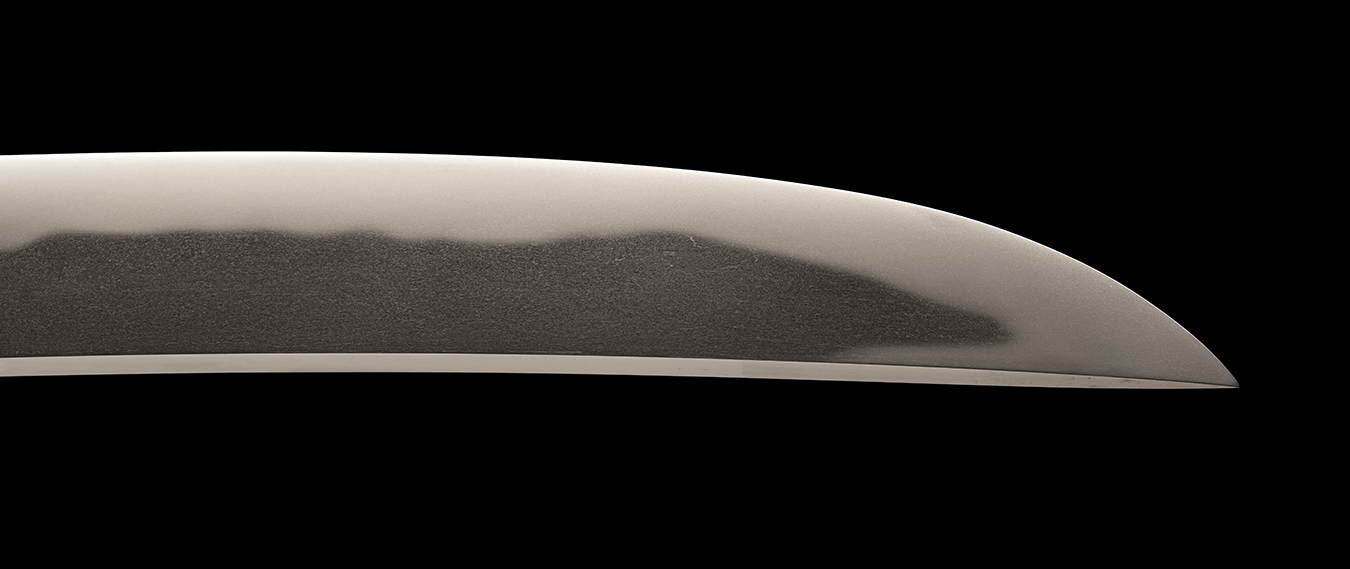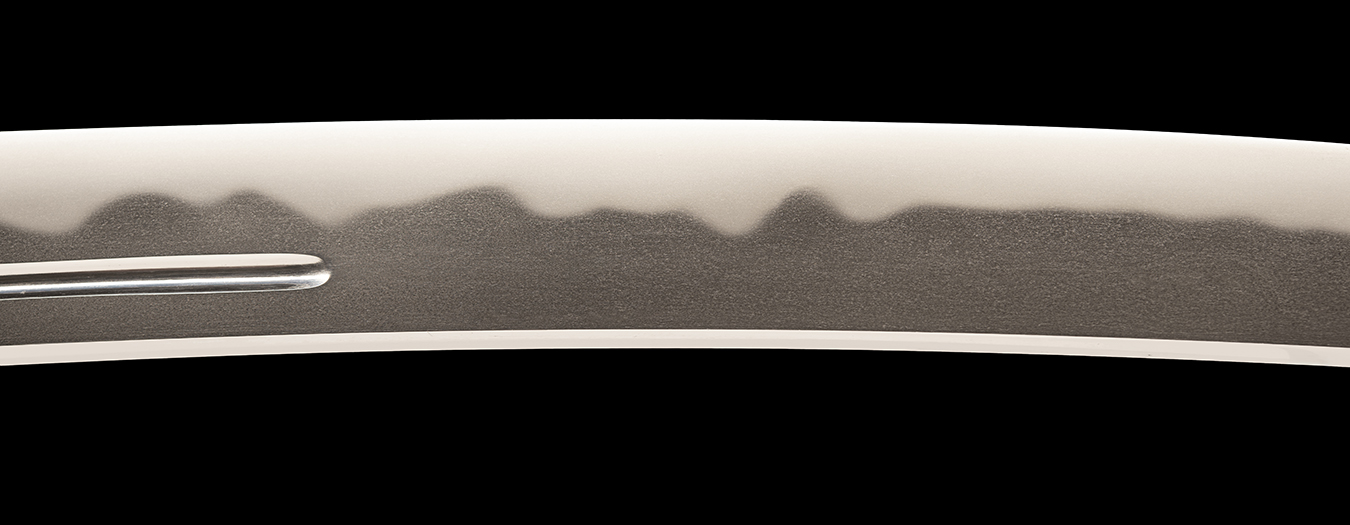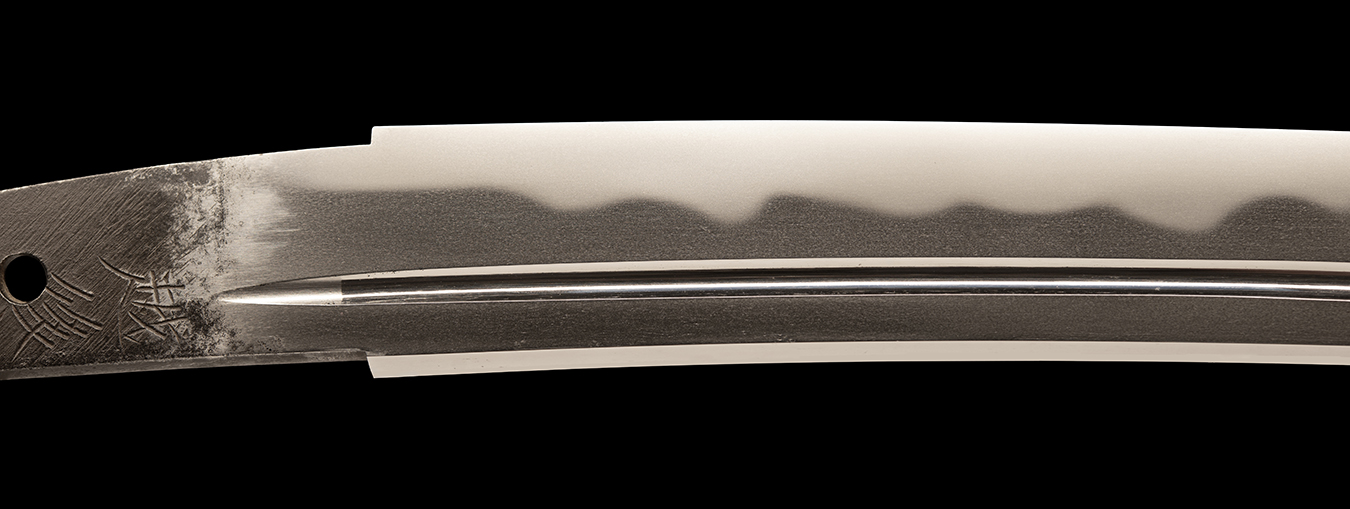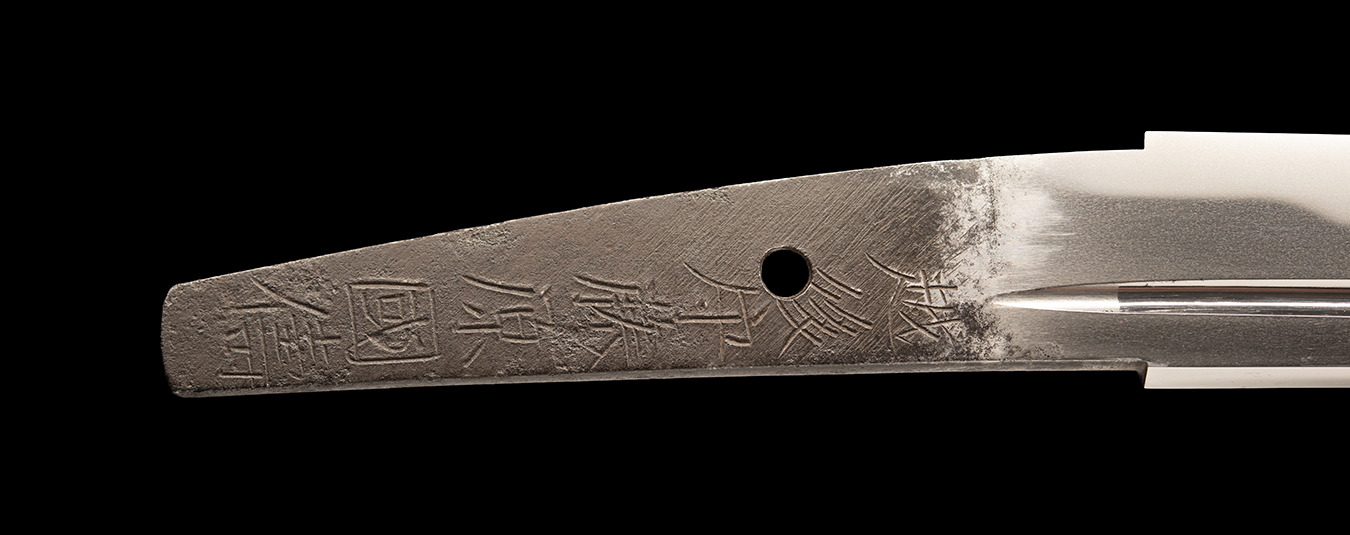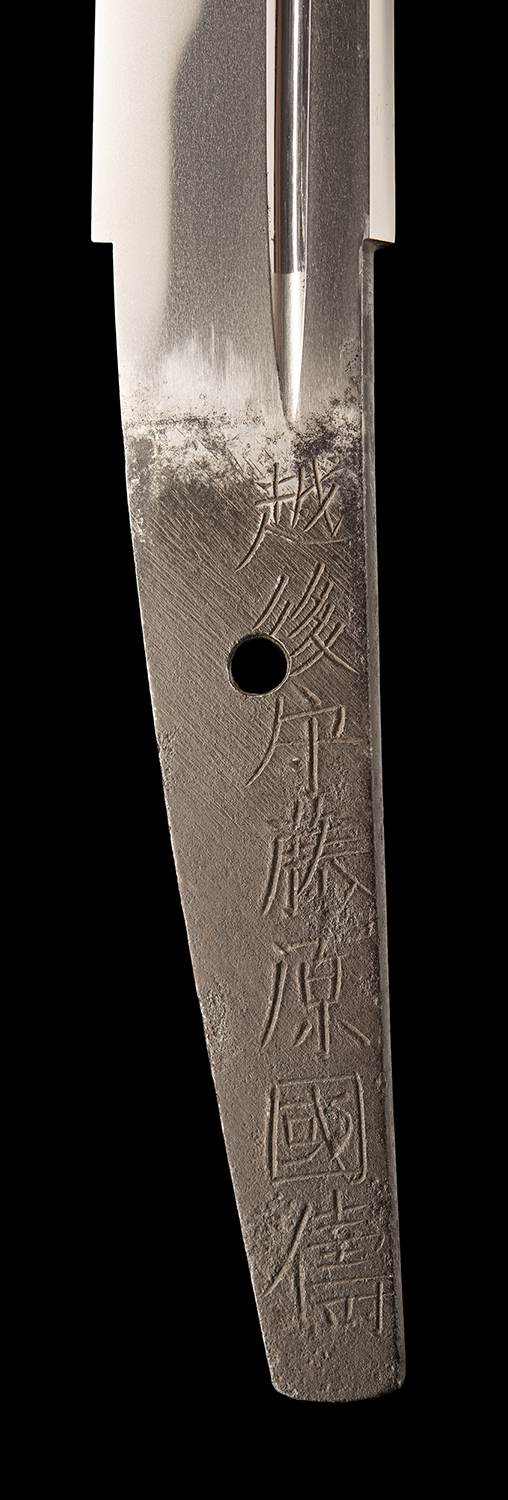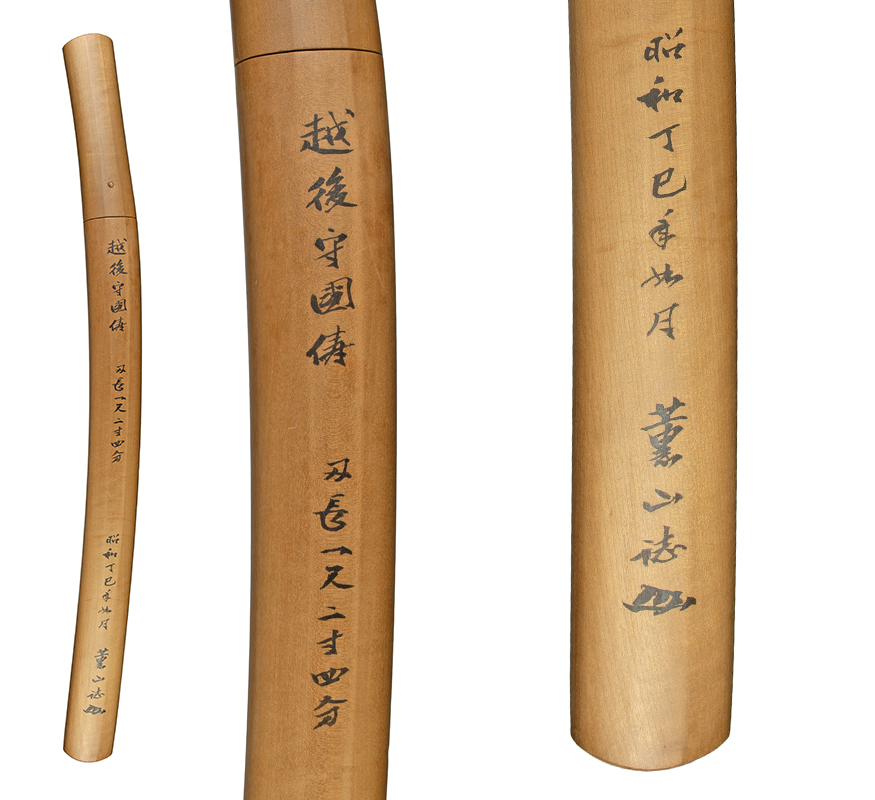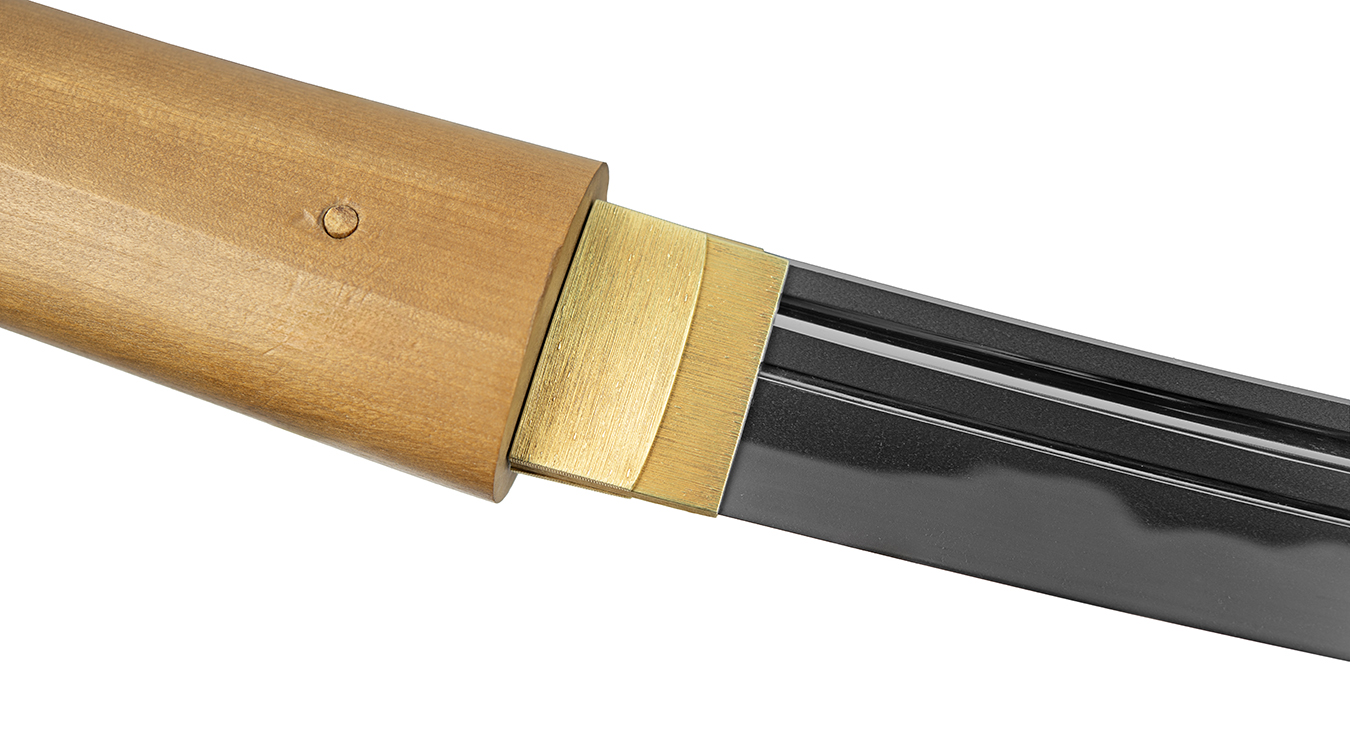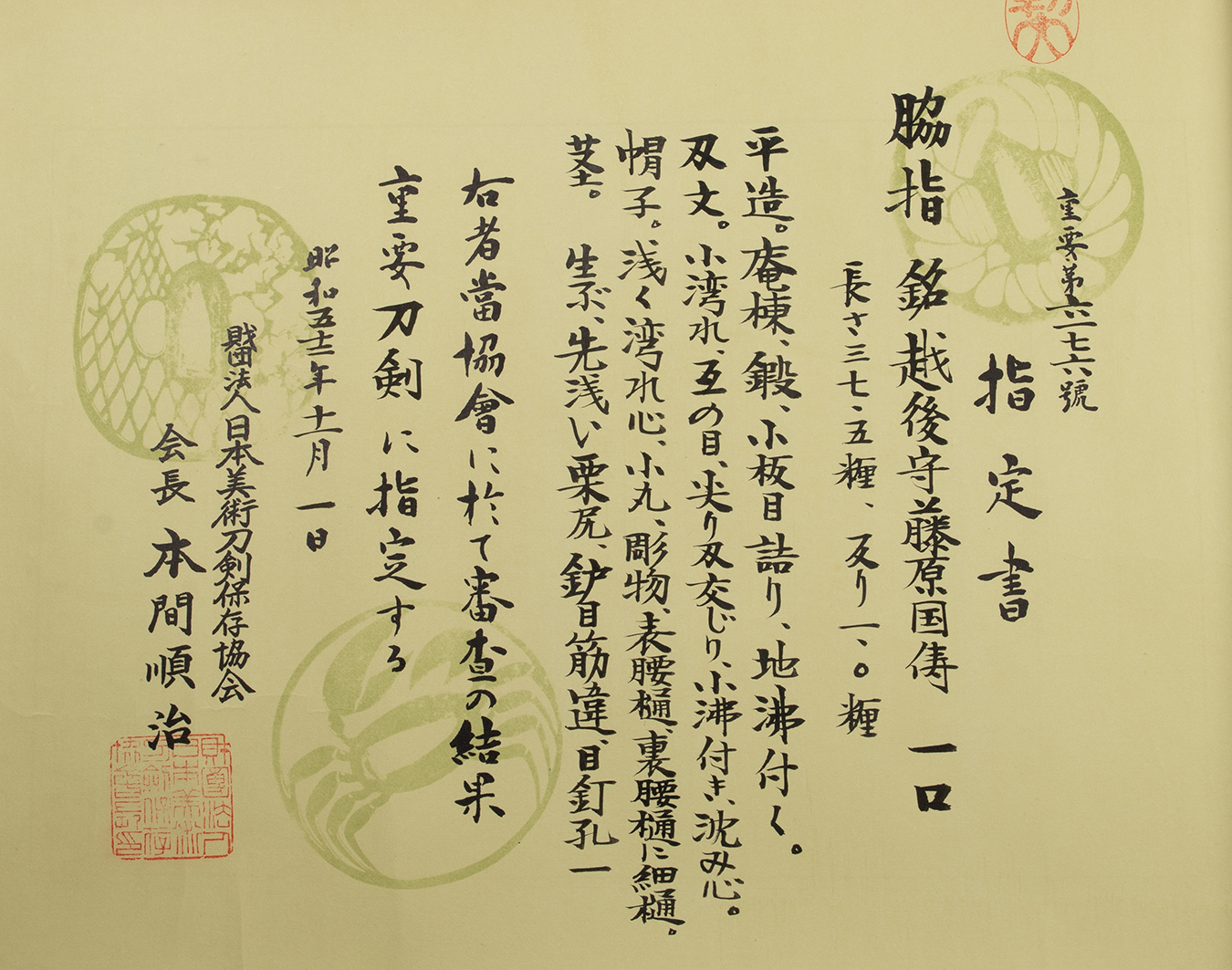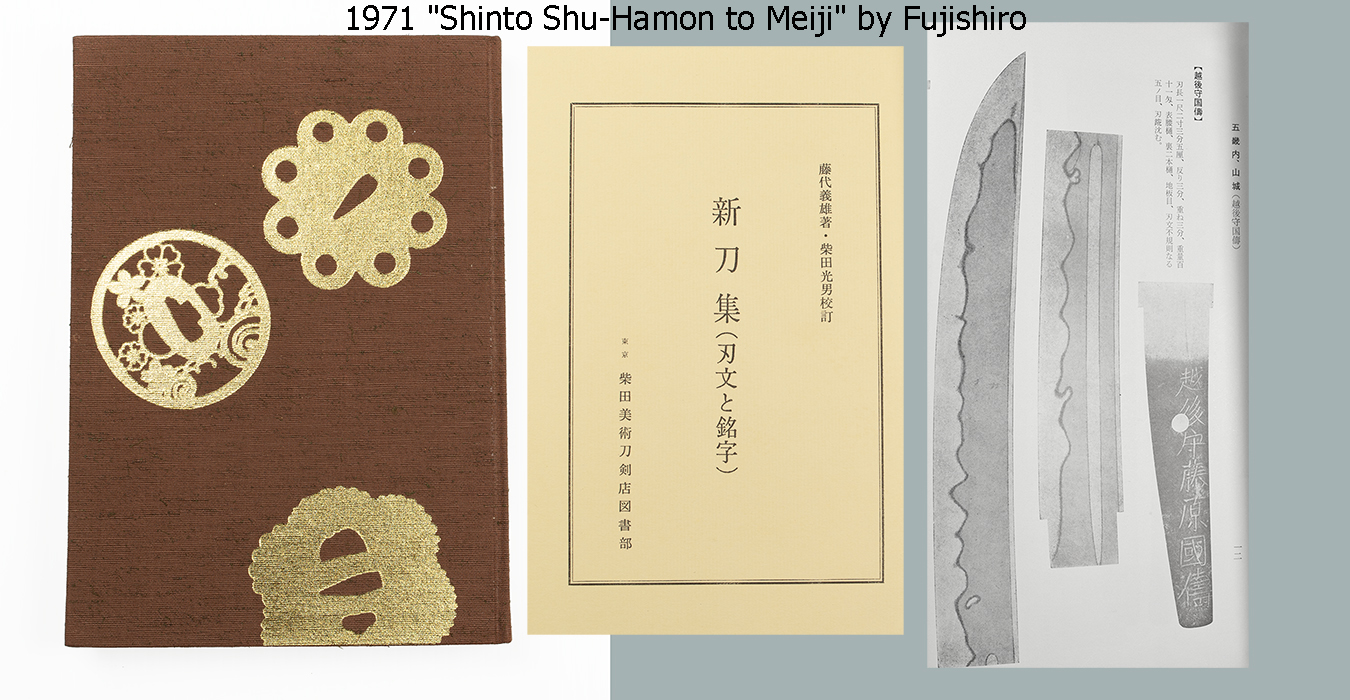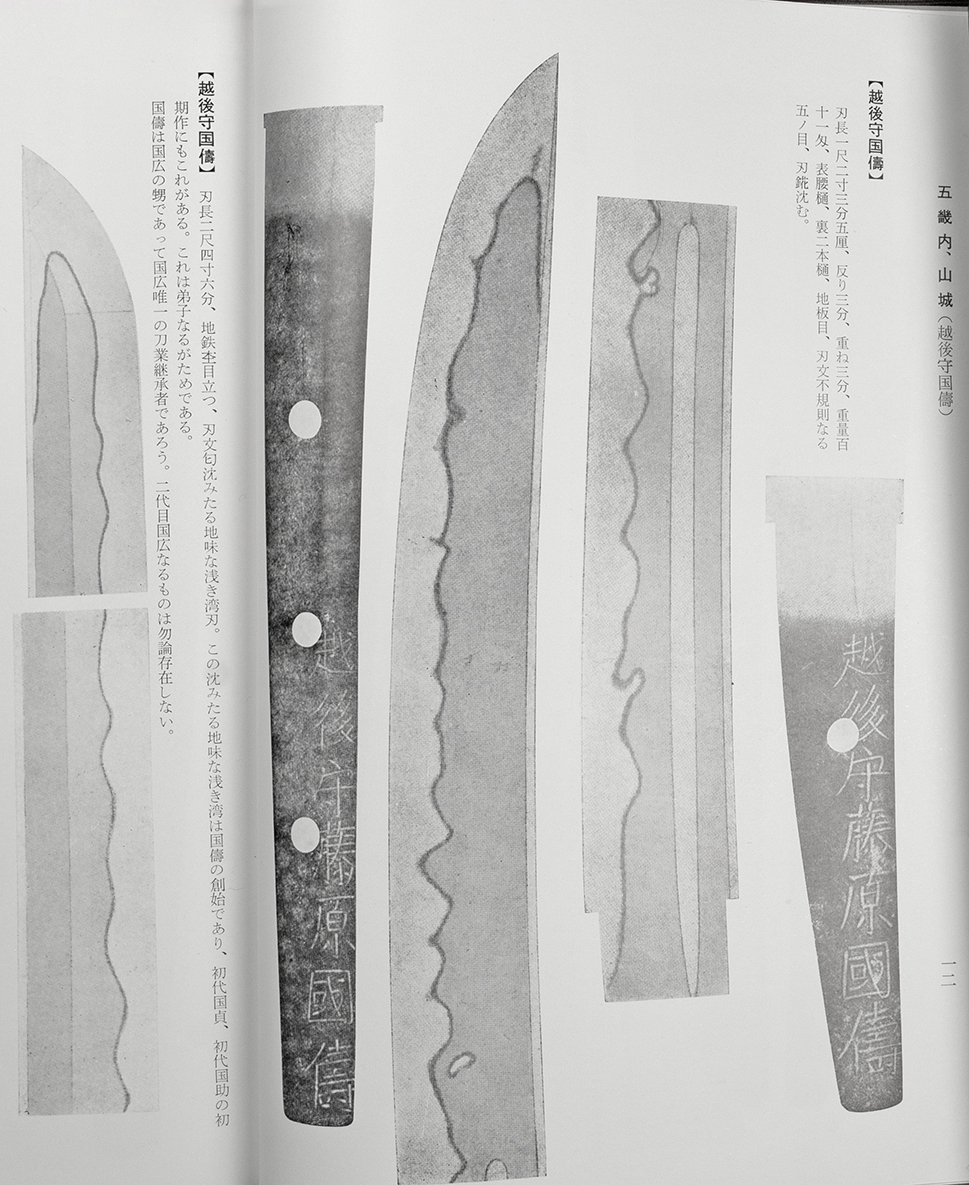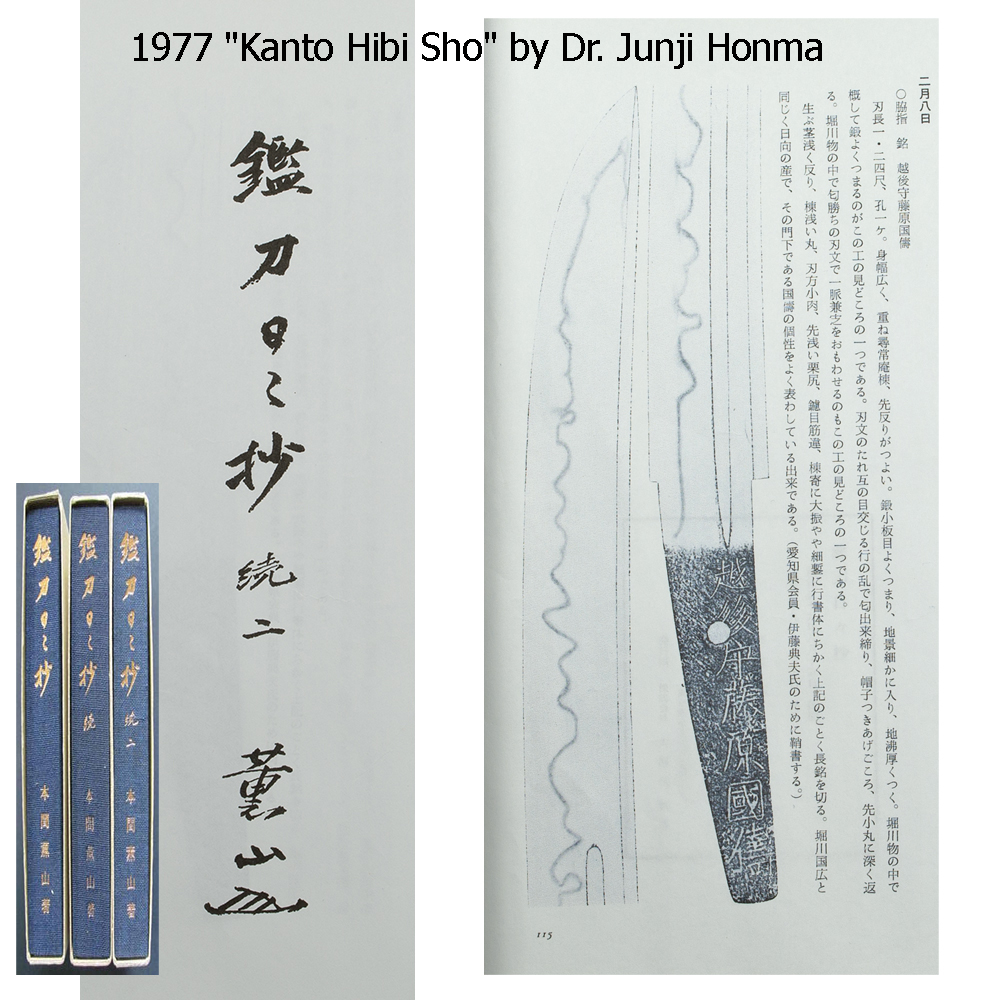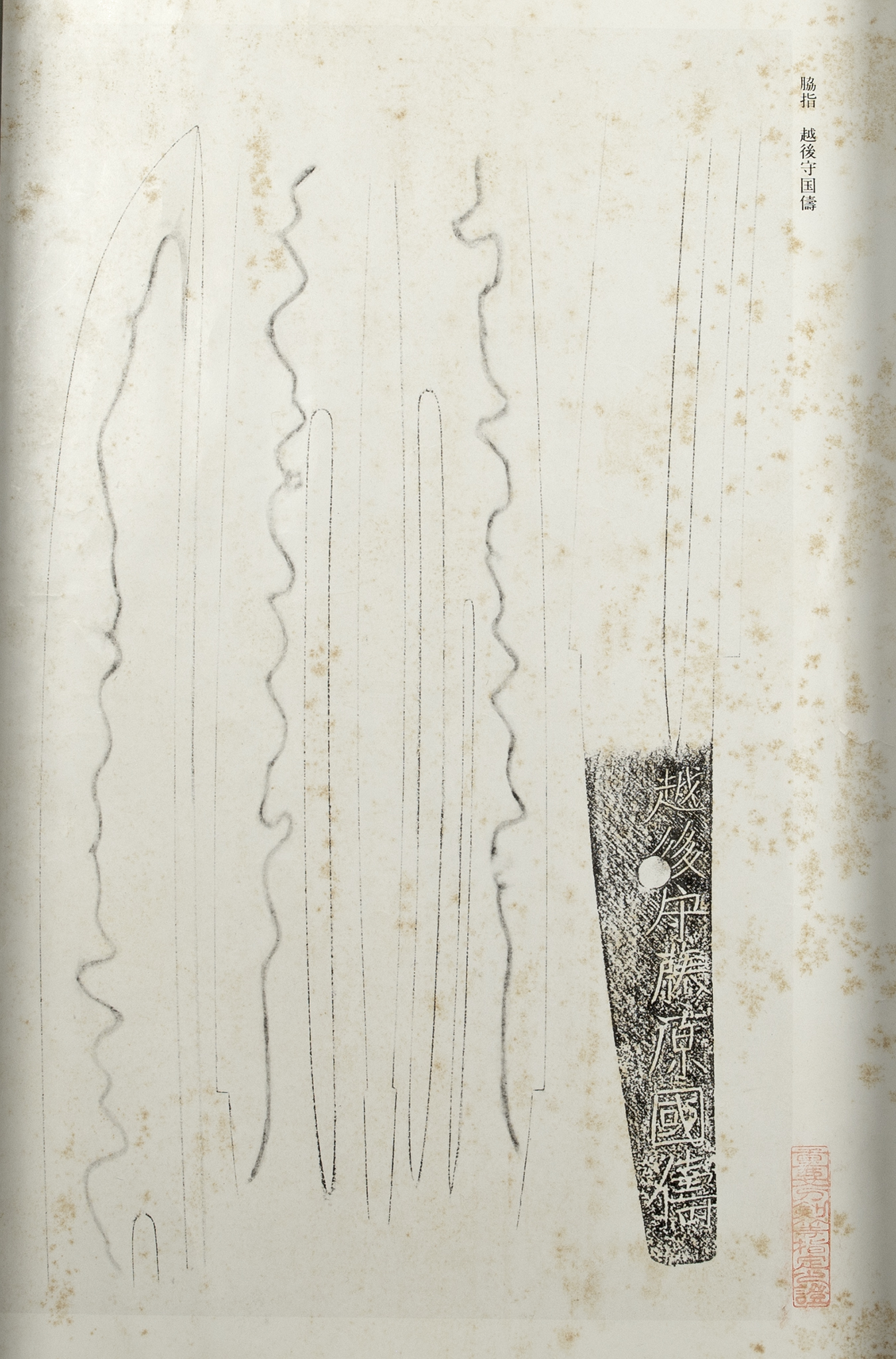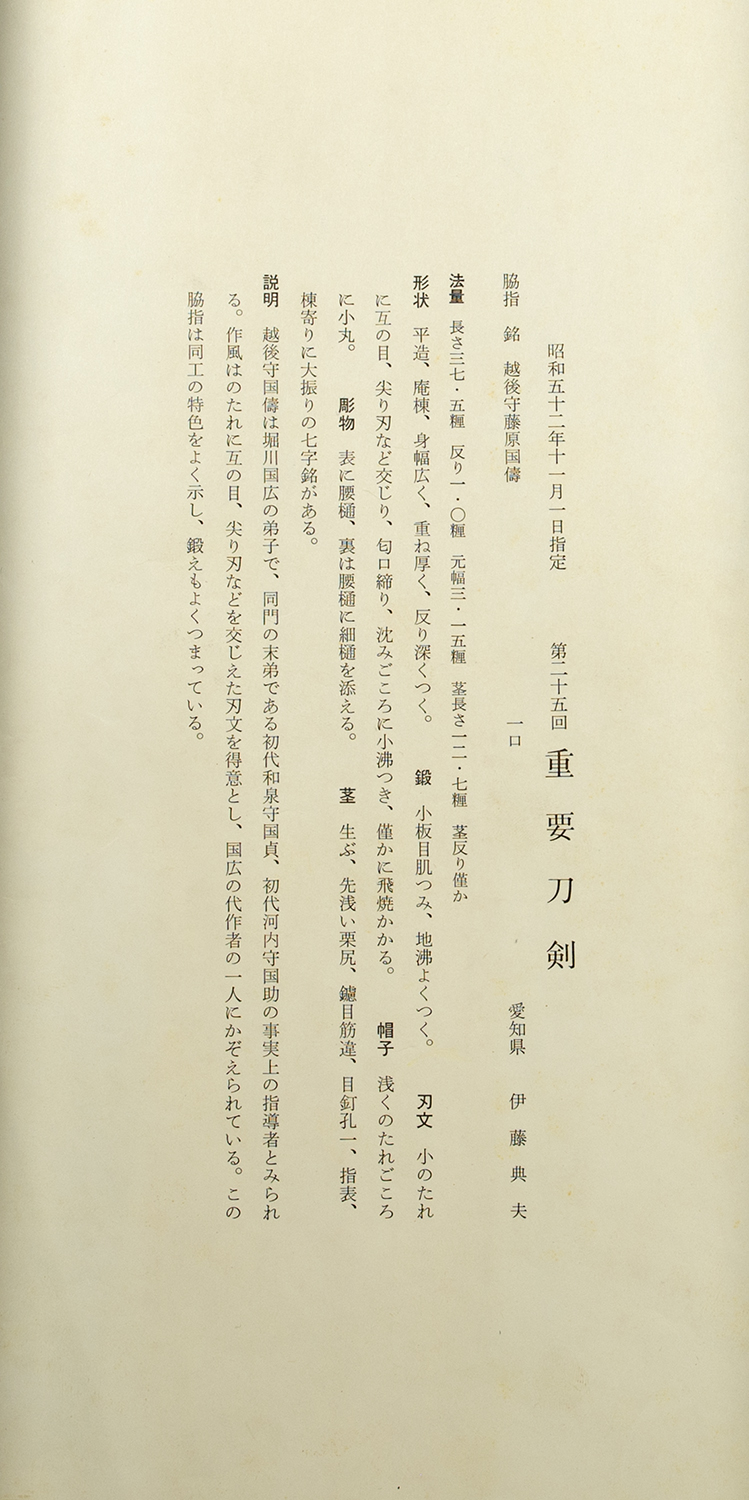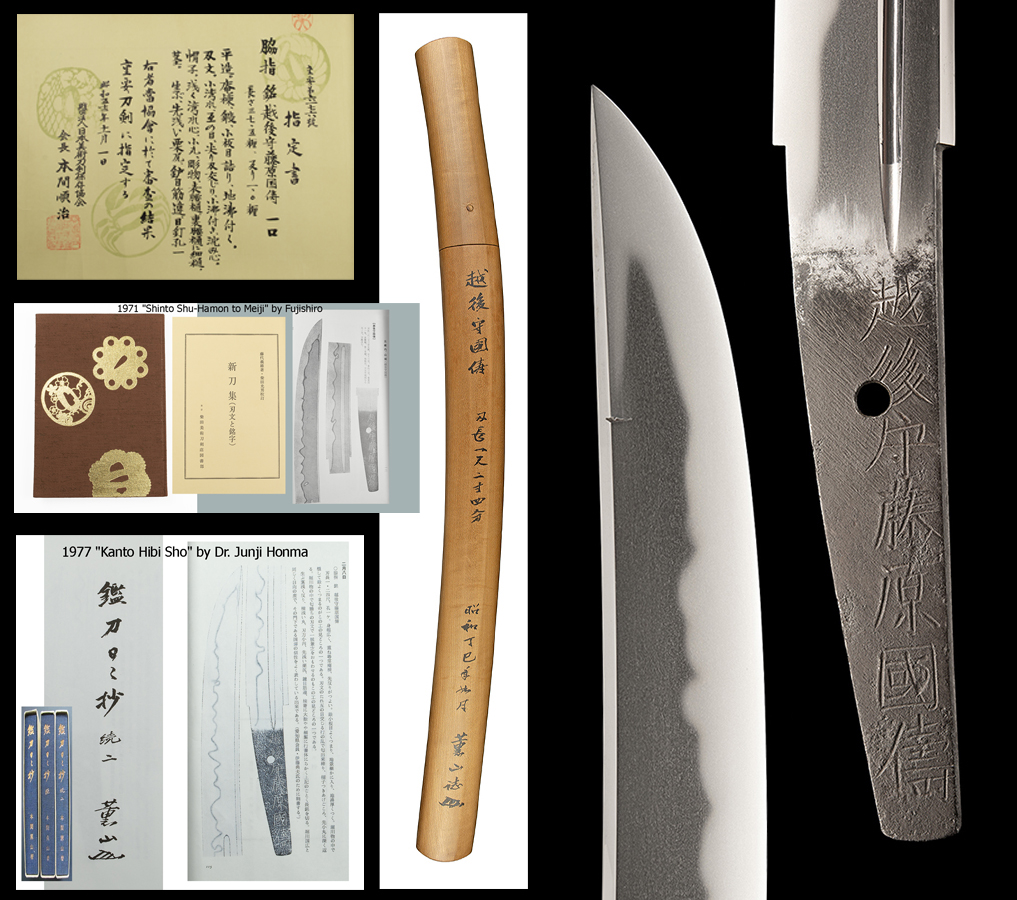|
| |||||||||||||||||||||||||||||||||||||||||
Hamon : Nioi-deki gunome midare with a gorgeous, soft and subdued nioi-guchi. Ko-nie is also present. There are soft ashi and togari is mxed in. The control of luminosity and depth of the nioi-guchi in this work is masterful.
Boshi : A bit jizo in style and with a long return. Nioi is strong throughout the tip of the kaeri.
Kitae : Spectacular itame hada. Absolutely covered in ji-nie from the habuchi to the mune. Many Chikei can be seen. Some soft clouds of nioi float above the hamon and this adds to the visual splendor of the kitae.
About this sword : This Kunitomo was published three times by top scholars in the field of Nihonto study. Once by Fujishiro in "Shinto-Shu" and again by Dr Junji Honma in "Kanto Hibi Sho" and again in the 25th Juyo Token Nado Zufu volume. There is no more splendid way to describe this work, than to share what past authorities have written about this exact blade. Details of these publications are as follows:
1971 published in "Shinto Shu-Hamon to Meiji" by Fujishiro.
This is a major book in the field of sword study and remains an authoritative source on the subject to this day. Fujishiro produced this book to show the hamon and mei of top shinto smiths. The swords shown in "Shinto-Shu" are top examples and highly representative works. This exact sword is featured on page 12 of "Shinto-Shu":
"Echigo no Kami Kunitomo
Tempered length is 1 shaku 1 sun 3 bu 5 ri, sori is 3 bu, the thickness is 3 bu, the weight is 111 momme, there is a short groove on the omote, on the ura of the blade are two parallel grooves, blade steel is itame, temper pattern is irregular gunome, ha nie is subdued."
In the next entry, Fujishiro shares additional insight about Kunitomo:
"This subdued, shallow, undulating temper line is Kunitona's own design and of his origination. This is also in the early works of Shodai Kunisada and Shodai Kunisuke. This is because they were Kunitomo's disciples. Kunitomo is Kunihiro's nephew and the only one to inherit his style. Of course, there is no second generation Kunihiro."
1977 published in "Kanto Hibi Sho" by Dr. Junji Honma.
This series was first published in the NBTHK magazine as a monthly feature. It ran from 1969 - 1983. The series was later published in a multi-volume book set. "Kanto Hibi Sho" was Honma’s sword diary and he used it to record details and oshigata of swords that he did saya-gaki for. Only high quality blades were introduced. The book series remains a source of great knowledge and insight, especially into the criteria of Juyo. Markus Sesko is currently translating this series in to English and has finished 1969-1976. The volume that contains this Kunitomo should be available from Markus soon.
The entry for this blade in "Kanto Hibi Sho" translates as follows:
Wakizashi mei: Echigo no kami Fujiwara Kunitomo Ha nagasa 1.24 shaku, ana one, wide mihaba, normal thickness and iorimune, kitae koitame, fine chikei, thick ji-nie, his kitae is representative work of the Horikawa school. Hamon is nioi-deki, tight notare mixed with gunome and yuki gunome. The boshi is tsukiake gokoro with pointed tip and deep return. Among Horikawa mono with the excellent nioi that look just like a No Sada, is this smith's excellent work.
Ubu nakago with shallow sori and shallow maru nakago mune, ko-niku on the nakago ha, and nakago tip is chestnut shape, yasurimei sujikai, Large mei with fine strokes along the nakajo mune and as noted it's a long mei. He came from the same two Hyuga as his teacher Horikawa Kunihiro and this excellent work shows his characteristics wonderfully.
1977 The 25th Juyo Token Nado Zufu Volume
Showa 52 year 11 months 1st day Designated The 25th Juyo Token
Wakizashi mei Echigo no Kami Fujiwara Kunitomo
Ichiguchi Aizu Prefecture owner's name
Sugata: hira-zukuri, iori-mune, wide mi-haba, thick, deep sori
Kitae: koitame ji tsumi, thick ji-nie
Hamon: ko-notare, gunome, mixed with togari, tight nioi-guchi that is subdued and with ko-nie and tobiyaki
Boshi: shallow notare and ko-maru
Horimono: omote: koshi-hi ura: koshi-hi plus hoso-hi
Nakako: Ubu, tip is shallow chestnut shape, yasurimei sujikai, mukugi-ana: 1, omote nakago large 7 kanji mei close to the nakago mune
Explanation
Echigo no Kami Kunitomo is a student of Horikawa Kunihiro. He's the actual teacher of Shodai Izumi no kami Kunisada and shodai Kawachi no kami Kunisuke although they were all students of Kunihiro.
His workmanship and style are Notare-like Gunome, his most skillful hamon is mixed with notare, he's known to make dai-saku for his teacher, Kunihiro. This wakizashi is showing the special characteristics of his work clearly and the kitae is especially well executed.
The sayagaki by Junji Honma reads as follows:
"Echigo no Kami Kunitomo Nagasa 1 Shaku 2 sun 4 bu Showa 52, year of 丁巳 and in Feb (1977) Kunzan Junji (Kao)"
A breath-taking and highly published Juyo Token by a renowned smith. A lifetime of enjoyment awaits its new caretaker. Accompanied by a shira-saya with Honma's sayagaki, a fine double gold foil habaki and its 25th Juyo Token papers.
SOLD


